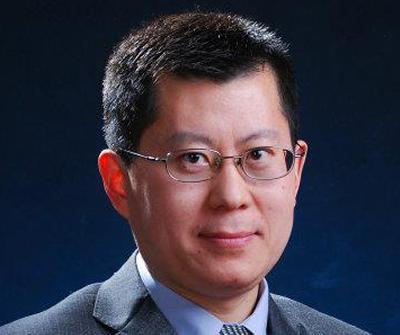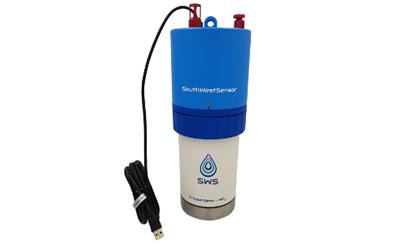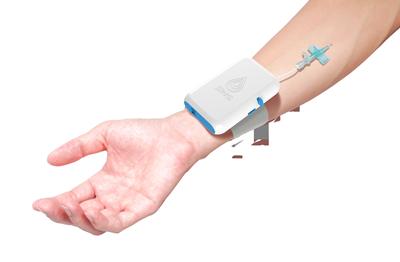
Professor Xize Niu, Associate Professor in Engineering and the company’s Founder and Chief Technology Officer, talks about this exciting new technology and how the enterprise culture at Southampton is helping him to bring his research out of the lab to make real-world impact.
What’s the story so far for SouthWestSensor Ltd?
Our first employee joined us in 2017, following an initial investment round that raised £750,000, and latterly more than £300,000 of grants from InnovateUK and DSTL. In 2018 we recruited an experienced CEO, and that’s been a critical step to the development of the company. The team now consists of six full-time and four part-time staff, plus consultants and contractors.

We’re currently in the process of developing sensors for launch in two sectors – healthcare and environmental monitoring – with the first-generation water sensor now CE marked (to show compliance with health, safety and environmental protection standards) and available on the market.
How do the sensors work?
The sensors are based on my research in the field of microfluidics. The devices, which are small enough to be wearable or portable, use nanolitre droplets as reaction chambers to measure the concentration of biochemical markers in a liquid sample, for example, blood, serum, saliva, or water from a river or sea. The device accurately measures the samples at regular intervals – it could be every few seconds – and wirelessly transmits the data, enabling continuous monitoring.
What is the potential impact of this technology?
By constantly providing data about the rapid chemical changes in our body, our products could help doctors to monitor the condition of patients in real time. This would enable them to diagnose and treat acute illnesses quickly and monitor the effects of medical drugs. At the moment there’s no other technology available that can collect real-time biochemical data from patients, apart from glucose monitors for diabetes. Instead, samples are sent for laboratory testing, but this takes time and only provides a snapshot of the patient’s condition.
In environmental monitoring, by enabling long-term, remote pollutant monitoring in rivers and seas, our sensors will also support better environmental management. This technology is already attracting interest from organisations such as water companies and the Environment Agency.

How has the University supported your spin-out journey?
Research and Innovation Services helped us with our patent application and fundraising, and with forming the company and arranging our patent licensing agreement. Through Southampton’s membership of SETsquared, an enterprise collaboration with the universities of Bath, Bristol, Exeter and Surrey, I was able to go on an Innovation to Commercialisation of University Research (ICURe) training camp designed to help academics and researchers learn about the commercial world. We were trained in the ‘Lean startup’ approach, which has been very valuable. Our investors and industrial partners all appreciate our approach of spending prudently and bringing products to market as early as we can.
We also receive support from Future Worlds, the University’s brilliant start-up accelerator. It links companies with mentors and investors, organises seminars and events, and we have office space there. The supportive environment here has been critical; it helps you realise that you’re not working alone.
How has the research environment at Southampton helped you to advance the sensor technology?
Southampton has excellent research facilities and strong engineering research groups. The Institute for Life Sciences encourages a very open and collaborative culture, giving us access to other fields of expertise. The National Oceanography Centre Southampton has been helpful for our environmental device development, and on the medical side we were able to undertake proof-of-concept testing at Southampton General Hospital, monitoring lactate and glucose levels in healthy volunteers. We’re currently working with clinicians to fine-tune the technology for use in conditions such as sepsis, where changes in the body can occur rapidly and fast intervention is essential.
How does your involvement with SouthWestSensor benefit Southampton students?
It enables me to bring real-life case studies into my teaching. For example, I use the technology we have developed to teach first-year undergraduates about the principles of sensors. We also provide individual project opportunities for third-years and group design projects for fourth-year integrated masters students – for one such project, students deployed water sensors in an autonomous boat to survey the water quality in a local river.
We offer projects for students on taught MSc degrees too. One master’s student, Wahida Bhuiyan, did a project with us on wearable sensors and became so interested in the topic that she decided to return to carry on the project and pursue a PhD degree.
PhD students in my research group can seek practical support from SouthWestSensor’s experienced electrical and mechanical engineers and chemists. A postdoctoral researcher, Dr Adrian Nightingale, was supported by the company to obtain a Natural Environment Research Council fellowship to fund his research into chemical sensors for use on autonomous underwater vehicles.
So far SouthWestSensor has provided eight internships to undergraduates, and we actively recruit Southampton graduates by attending the University’s Engineering and Technology Careers Fair.
What have you found most challenging about setting up a new enterprise?
The main challenge is time. I’m still a member of academic staff at the University, so I need to continue to deliver high-quality teaching and research. But I’m also expanding the company, which takes a lot of time. So I don’t take much holiday!
And of course there are many technological challenges involved in turning the initial research and prototypes into a mature and reliable industrial product. But those are challenges I’m happy to take on.
What advice would you give to other academics who are thinking about commercialising their research?
Aim high and consider very seriously how far you can go with the technology. There are different routes to commercialisation – if you want to set up a company, you need to think about whether your technology can be developed into a ‘whole product’ that you can take to the marketplace. Otherwise, you might think about licensing your intellectual property.
Links to external websites
The University cannot accept responsibility for external websites.